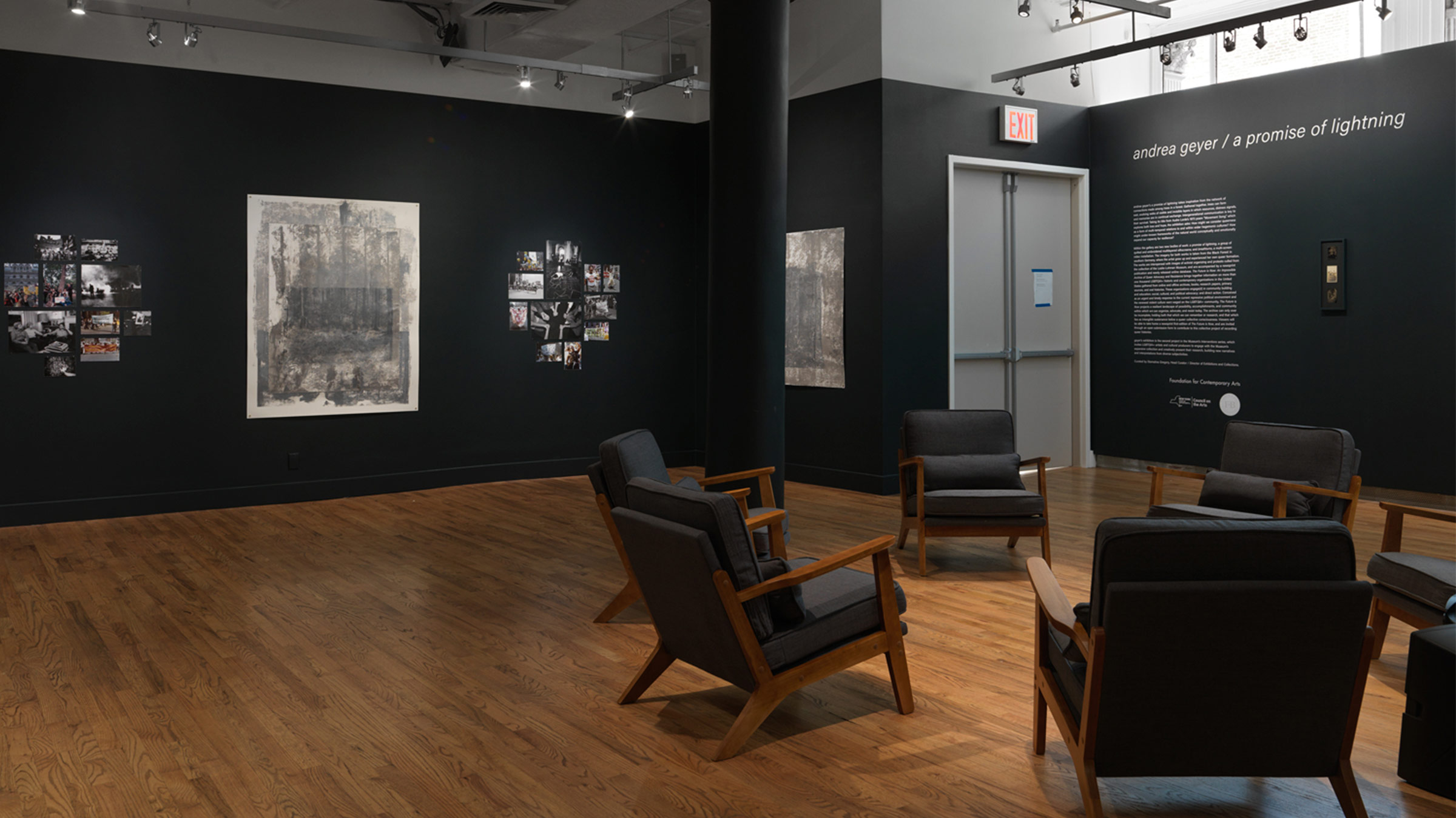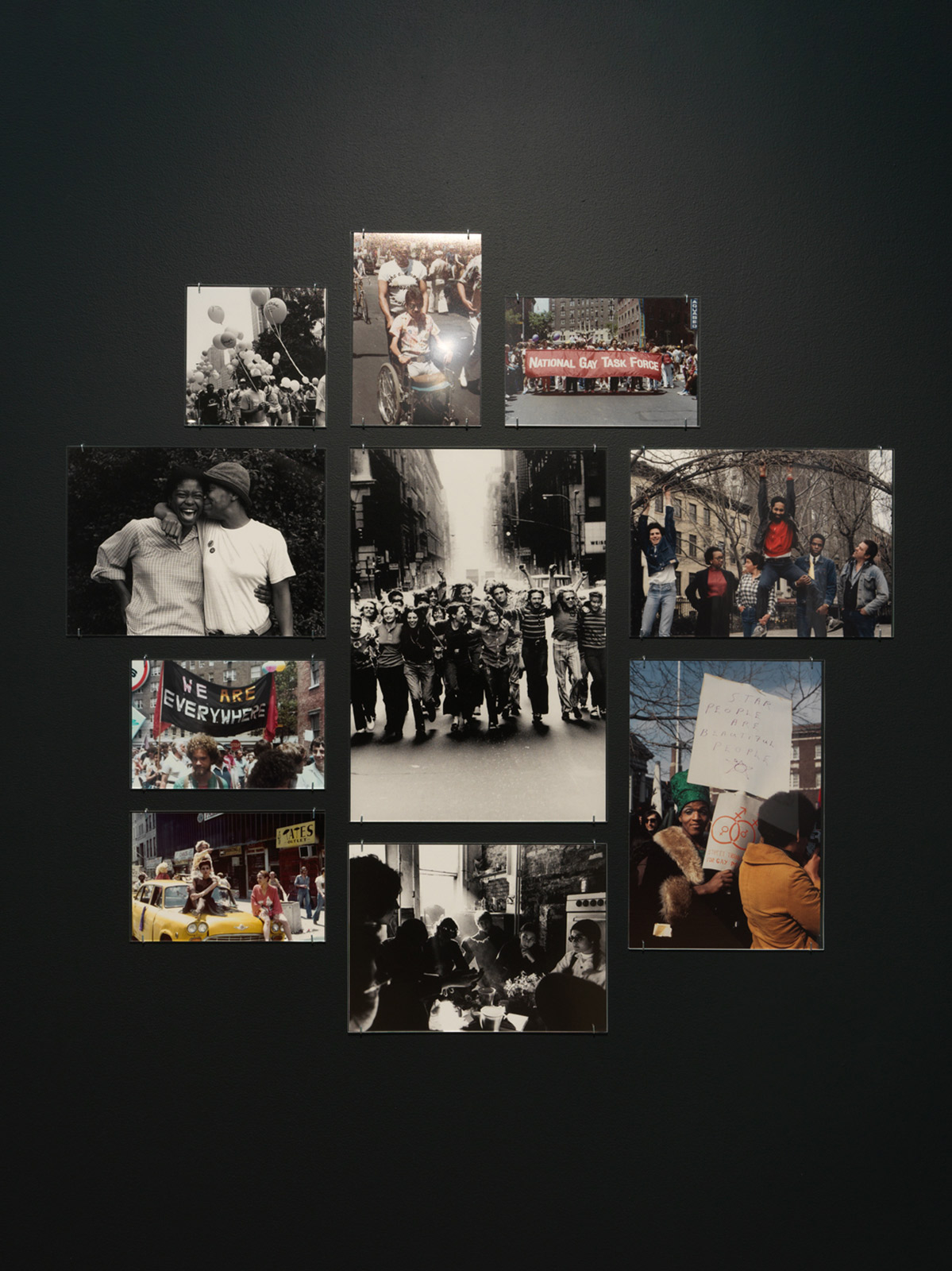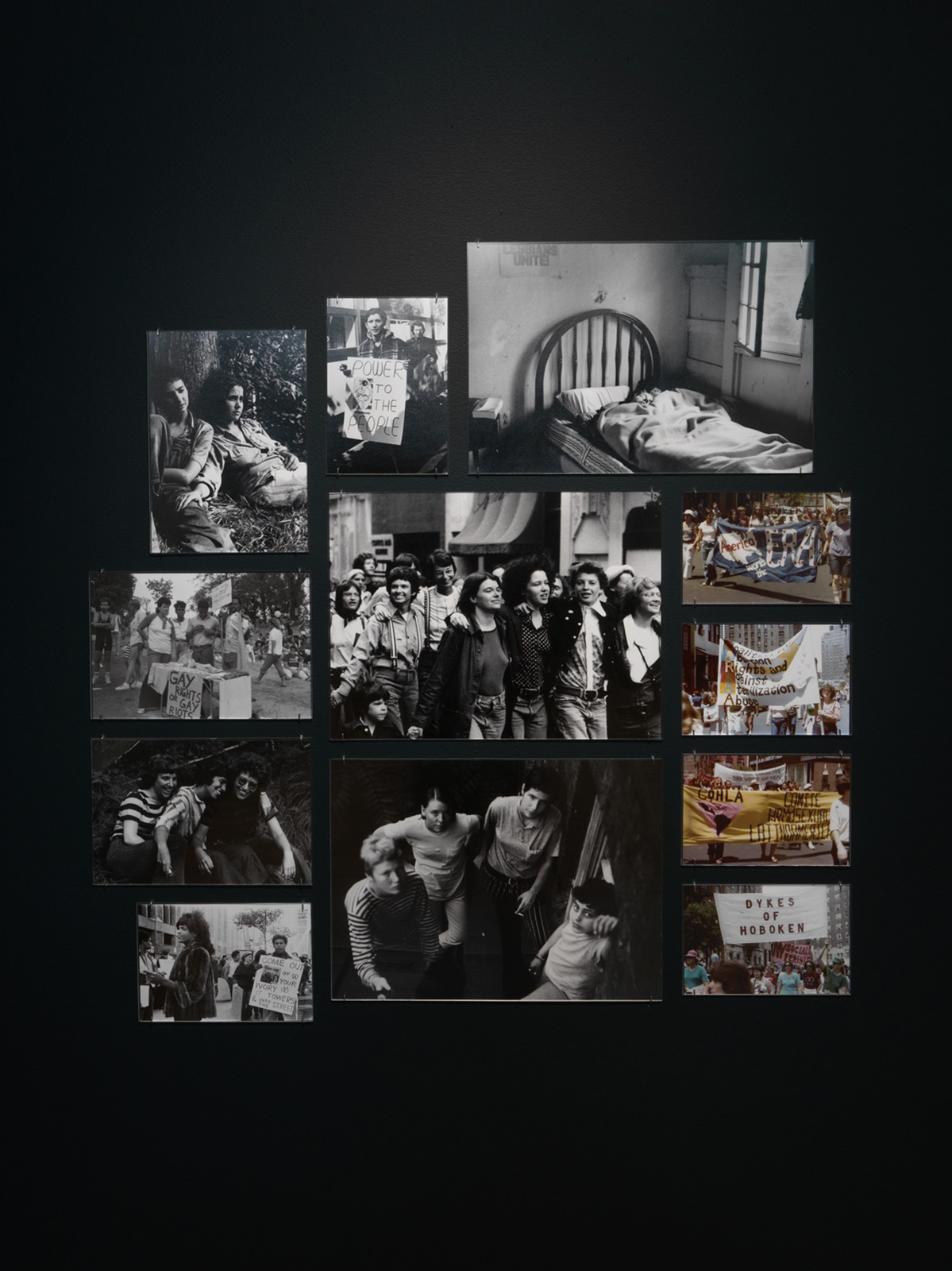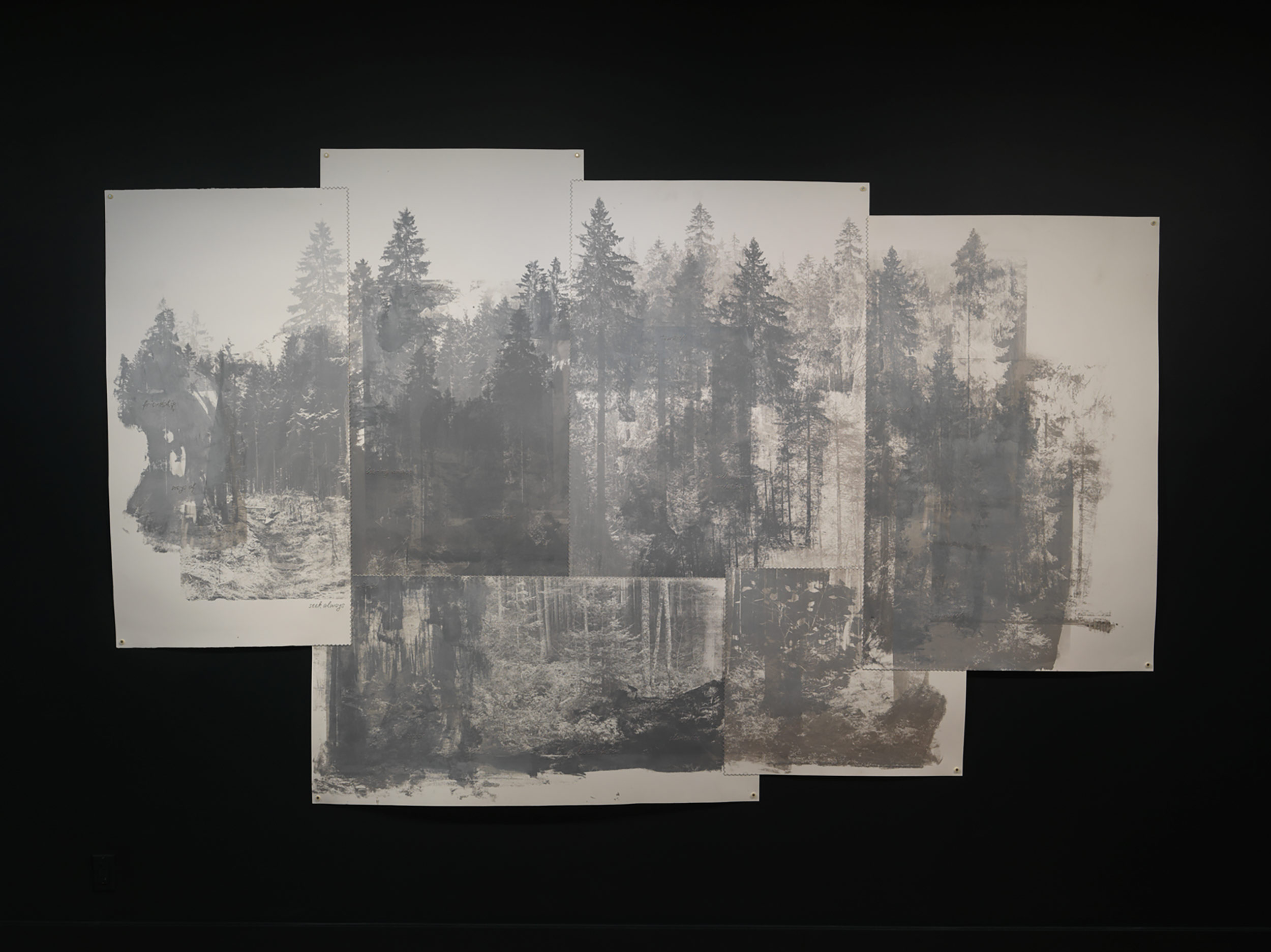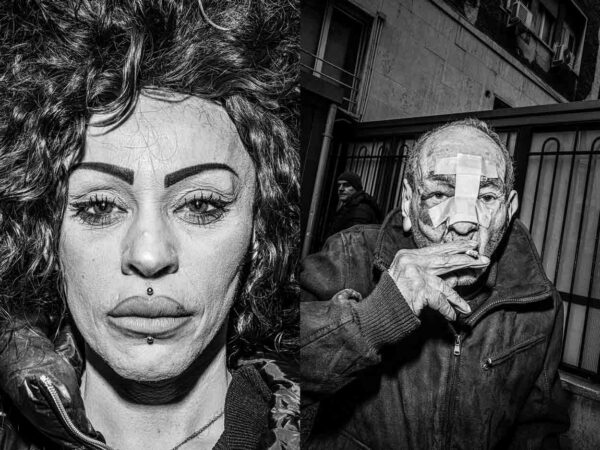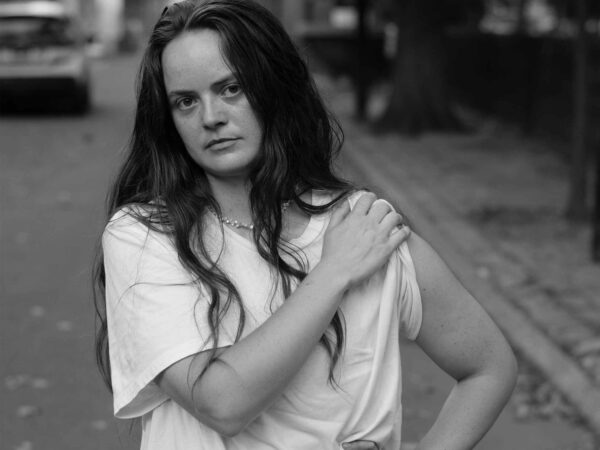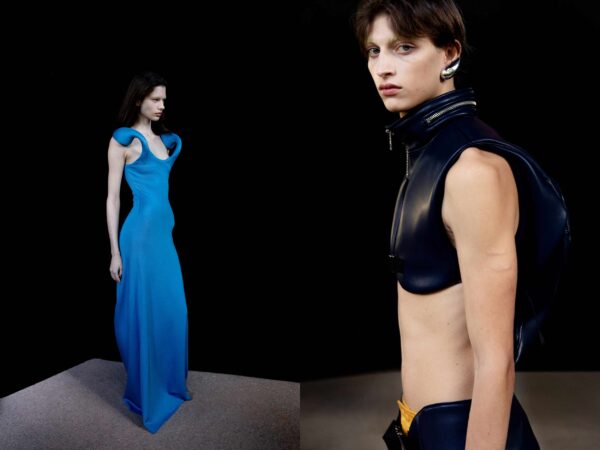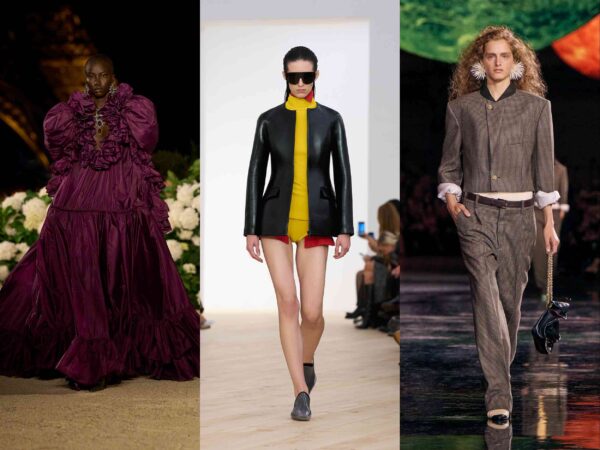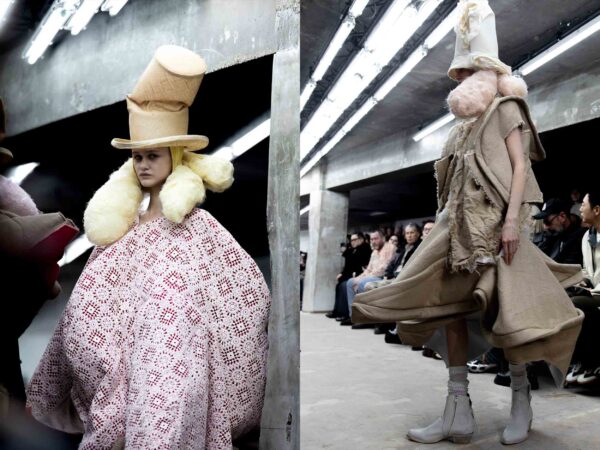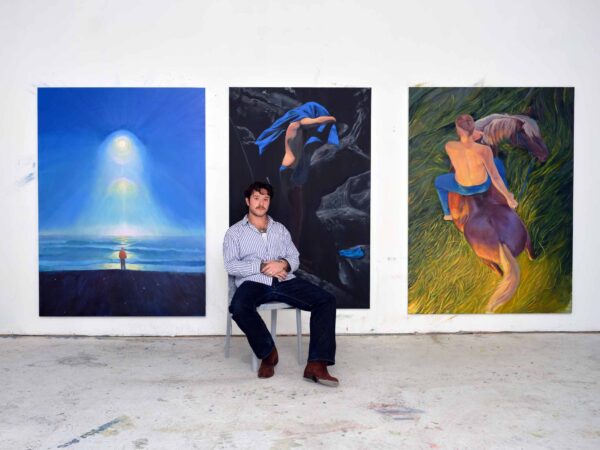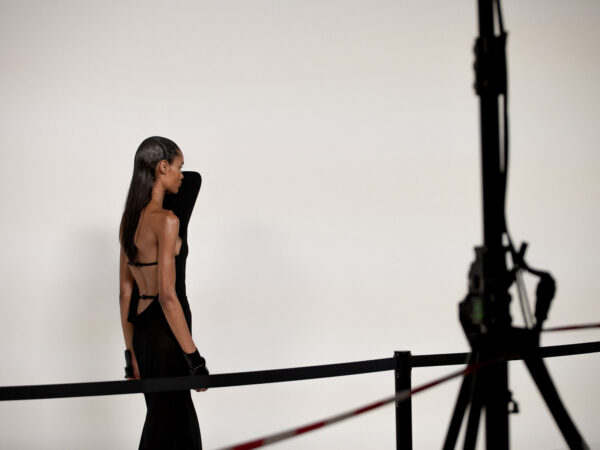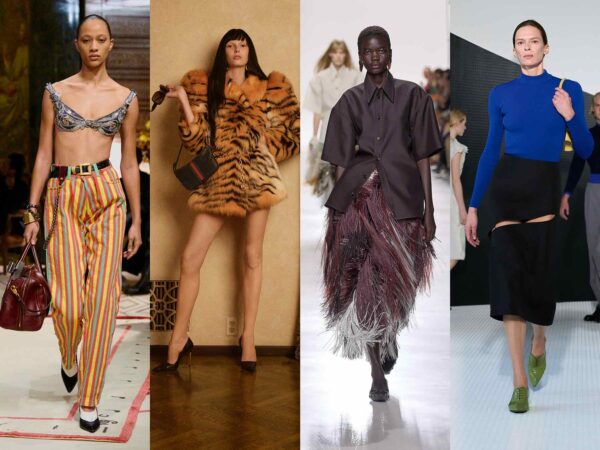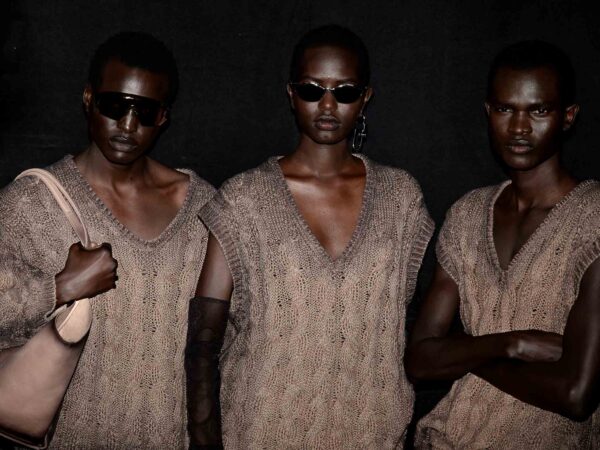On view at the Leslie-Lohman Museum of Art, the artist’s latest exhibition draws parallels between queerness and the the interconnectivity of earth’s environment
Trees are evolutionary witnesses; the etchings of history can be found in each ring engraved within their stumps, each fiber woven across their leaves, each root outstretched underneath the earth. A natural synchronicity, therefore, exists between the forests they inhabit and human history. Trees shelter and observe our identity formations, sufferings and sorrows, and subsequent resilience and resistance. They’re the silent voyeurs of humanity—a concept that artist Andrea Geyer dissects in her latest body of work.
On view at the Leslie-Lohman Museum of Art in Soho until January 12, Geyer’s a promise of lightning engages queer histories in a relational dialogue with the natural world. Across silkscreens, video installations, newsprints, banners, and photo series clustered about the walls, Geyer probes the hegemonic cultures that uphold systems of power and makes tangible the intergenerational wisdom that both forests and LGBTQIA+ communities can endow our contemporary methods of political mobility with.
Upon approaching the museum, visitors are greeted by Manifest, a series of white banners hanging in the gallery windows that Geyer has installed at previous exhibitions in Berlin and Pittsburgh. Stitched in glistening silver fabric are phrases like “I want a museum to feel its own floors tremble when others are destroyed in war,” and “I demand a museum to be a place where truth can’t run away from us” that immediately allow viewers to reconceptualize the museum from a commercialized institution to “a site of possibility to imagine not only ourselves but each other continuously anew,” says Geyer.
Within the exhibit itself, Geyer presents two new bodies of work that showcase Germany’s Black Forest: a promise of lightning and breathturns. Located just 30 minutes away from where she grew up, the dense forest imagery evokes not only Geyer’s queer identity formation, but the inseparability between environmental and political structures. “I realized that I was gay in the forest before I was gay in the world,” says Geyer.
In a promise of lightning, images of trees are delicately layered and screen-printed in iridescent ink across several quilted silkscreens. Light refracts off the ink depending on where the viewer stands in the gallery, calling forth the often obscured and invisible frameworks that form our conscious realities and selfhoods. Fragments of poems (“star lover reaching”; “inaudible presence”; “deviant”) that Geyer wrote after researching LGBTQIA+ community organization are embroidered into the silkscreens themselves. In Breathturns, videos of specific trees within the forest are displayed across multiple flat screen TVs around the gallery floor, further considering the hidden histories shared by both collective memory and ecology. Their combined silence and grayscale as a soft wind wavers the trees imbues the recordings with a tinges of nostalgia and solemnity.
The sophistication of both works’s mediums was an intentional artistic choice by Geyer. “I realized I had to reimagine the photographs and videos I had recorded to maintain the forest’s integrity,” she continues. “I developed a form of representation that allowed for the many layers in which it exists to remain tangible. The works show and perform a queer collectiveness not only visually but tangibly.”
Interspersed throughout the exhibit are photos documenting the queer community’s history of advocacy, protest, and organization that Geyer sourced from the Leslie-Lohman Museum’s photographic archive. Stills of activism, love, empowerment and strength underscore the messages of intergenerational perseverance that the Black Forest imagery introduces. Doubling down on this concept is a newsprint publication and online database titled The Future Is Now: An Impossible Archive Of Queer Advocacy And Resistance that tracks over 1000 historical and contemporary LGBTQIA+ organizations, and that viewers can take home a physical copy of.
“What this work shares with all my other works is that it hopefully materializes that what is called ‘underrepresented’ is often always already present, actively shaping the reality we live in,” Geyer concludes. “My hope is to open up a space for viewers to understand themselves in relation to each other and to these larger histories mapped out as part of the exhibition.”


